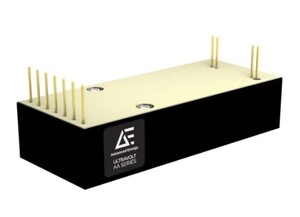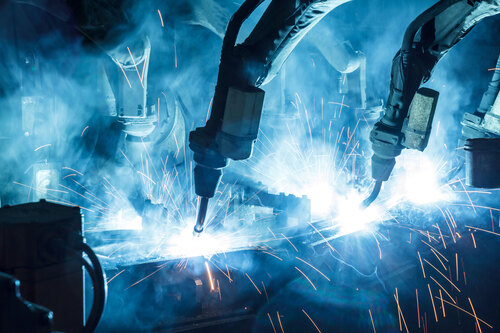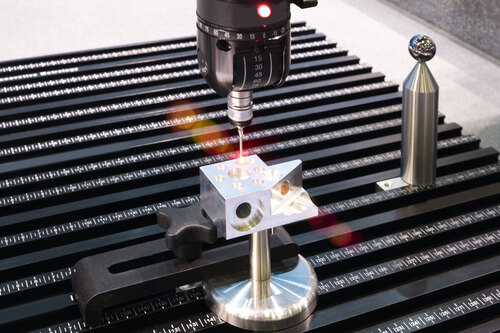
A high voltage power supply is a power conversion circuit that converts a low potential difference input to a high potential difference. With an AC current, it’s fairly simple to variate voltage levels via a transformer, but this isn’t the case for DC power.
In the past, there was little need for high voltage applications, with low voltage 12V/24V/48V industrial power supplies being the norm. However, nowadays, as industrial applications become more and more demanding, the demand for high voltage outputs has grown accordingly. Whilst many companies have opted to research and develop their own bespoke DC-DC solutions, the astronomical cost involved in designing industrial power supplies makes this option off-limits to smaller firms and users.
Why High Voltage?
The primary reason high voltage is used in specific applications is to increase efficiency. The higher the voltage, the lower the current and hence the lower resistance leading the lower power losses.
For home installations, the lower voltage makes it significantly safer to use as comparatively consumer electricals use significantly less power than e.g. industrial processing machinery. But industrial installations consume a lot more power and can be better managed to mitigate safety risks than in the home.
If the power required for industrial applications relied on high currents and low voltage, very large and complex conductors would be needed, making installations unbearably expensive to design and maintain.
How a high voltage power supply works:
The mains input for these power supplies can be of any standard voltage available in DC form, for example 24VDC input. Whilst the term “high voltage” is not quantifiably defined, DC-DC converters can have a variable output voltage up to 40kV.
The standard DC input first passes through an input filter to create a smooth voltage from irregularly or pulsating voltage inputs. This is achieved through the diversion of ripple voltage over capacitors storing and releasing charge in a controlled fashion.
Then, an inverter converts the DC power input to AC, ready to pass over a high voltage transformer. A voltage multiplier converts this AC electrical power of a lower voltage to a higher DC voltage output. A further pass through a DC filter ensures a low noise high voltage DC output.
Advantages of Standard High Voltage Modules:
The use of off-the-shelf DC-DC converters benefit system designers who are striving for reduced size and weight. Standard high voltage DC-DC converters are significantly more space efficient than using centralised high voltage designs.
System designers can also benefit from reduced development costs by using off-the-shelf parts, a installing standard PCB-mounted micro-sized power supplies like the Ultravolt US Series does not require hand wiring, speeding up manufacturing time.
Standard modules allow for modifications to be made without affecting a proven base design, resulting for increased flexibility during development. Standard power supply modules are built to work seamlessly in many applications without the need for extensive module modification.
Most standard high voltage modules already have regulatory approvals, making it easier for products and appliances to pass approval. Standard power supplies are rigorously tested to ensure safety, saving system designers time and money in testing.
Common Applications of High Voltage Power Supplies
There are hundreds of different uses for off-the-shelf high voltage power supplies and industrial applications can benefit from the cost, time and space efficiency of DC-DC converter modules. Lab technicians rely on mass spectrometers using high voltage power supplies with very high stabilities to ensure reliable and constant analyses. For applications like these, the UltraVolt HVA series is perfect for its excellent line regulation, load regulation, dynamic response and stability.
For example, base model micro-sized Ultravolt US allow users access to voltages up to 500V for customers with size-critical requirements. These are perfect for small, lightweight devices like particle physics detectors, photomultipliers etc.
Other more intensive workloads require DC-DC converters delivering higher voltages. For material separation, high voltage currents are required to power charge electrodes in separation chambers for industrial-grade electrolysis. In the radar world, transmitters and receivers require high voltages for sustained use. For example, a klystron amplifier benefits from 90kV for one megawatt of peak power, another application where a reliable and certified off-the-shelf high voltage power supply would be ideal.
Electron microscopes also require high voltage power supplies, with the requirement to deliver up to 30kV of voltage potential. The Ultravolt 30A-40A series, delivering up to 40kV output, is typically used in plasma or electrostatic applications. For x-ray installations, a high voltage power supply is a necessity to ensure a high-power input with negligible noise and minimal power loss.
Find your perfect high voltage power supply modules:
Components Bureau provide an excellent range of high quality and stability DC-DC converters for you to choose from. From micro-sized converters all the way up to power supplies delivering up to 40kV DC outputs, you can easily find the right component for your system from Components Bureau.
Click here to see our range







